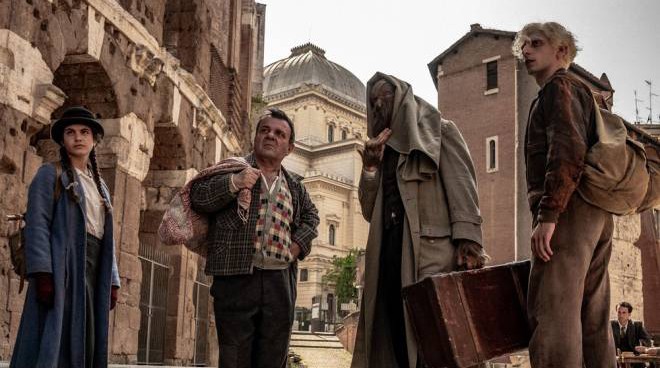Inside - Marooned in Manhattan
Inside, the english language debut of director Vasilis Katsoupis is much reminiscent of many pandemic era films that centered on a lone character in a single location. What distinguishes the film from other works with a similar premise is its meditation on art. Nemo, an art thief, ends up stuck inside a penthouse of a contemporary art collector, stranded in the middle of Manhattan, marooned amidst civilisation. For such a physical performance that requires so little dialogue as the protagonist of this film, Willem Dafoe is the natural choice, and he is himself the pillar of the film.
Nemo is the latin word for "nobody". The character might be seen as an archetype, a sort of cinematic "everyman", although his struggles and difficulties don't seem to have a metaphoric substrate or a deeper meaning. His surreal experience somehow is that of an anti-Robinson Crusoe: if Daniel Defoe's classic shipwrecked character builds civilisation out of wilderness, in a very colonialist approach, Nemo destroys and deconstructs a place representative of peak tecnological progress, stranded amidst the pinnacle of civilisation, Manhattan. If the location is filled with contemporary art, he paints on the walls stories reminiscent of the prehistoric age.
His breakout attempts soon become ritualistic, as he builds an altar of the pieces he removes to cut an escape route, his journey never feels horrific as much as it feels like work of performance art.
His deconstruction of the place os methodic, a creative process.
In a way, the film itself can be described as a work of performance art, of the likes of the works of Joseph Beuys, who famously enclosed himself in an art gallery together with a coyote for a week. Beuys' work, however, had a deeper meaning, as it aimed to explore the relationship between humans and nature. The film is introduced as a meditation on art, but its analysis remains
rather shallow, in an "art pour l'art" level that never questions deeper
layers of meanings aside from formal aspects, and never delves into the
multifaceted character of contemporary art aside from the mere presence
of it nad its superficial appreciation. We are introduced to a whole
series of contemporary artworks without any explanation given. Contemporary art requires insight, analyisis, something that is not provided in the film.





Comments
Post a Comment